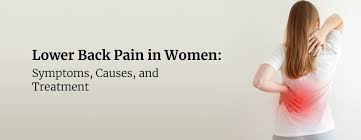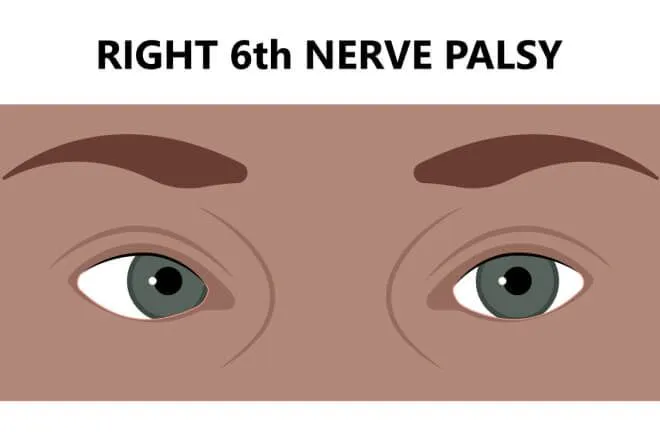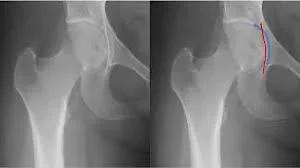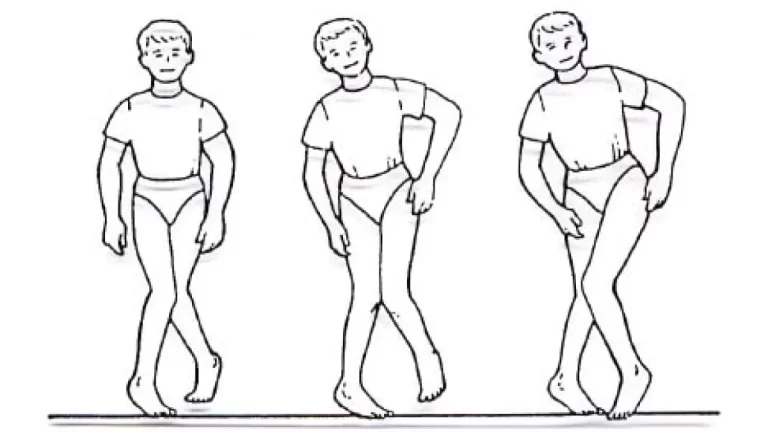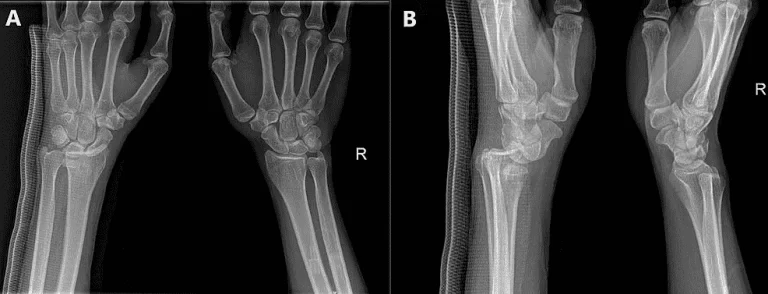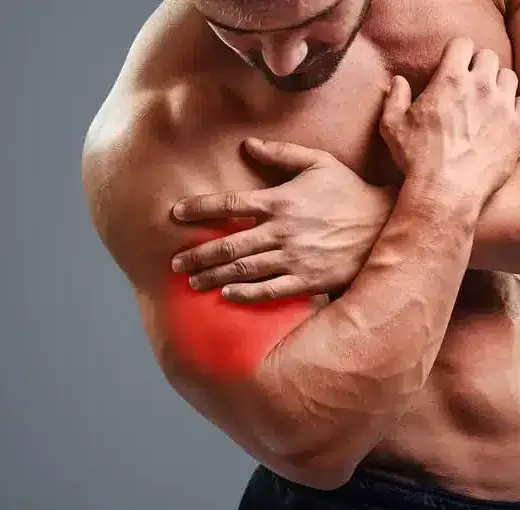What Can Cause Lower Back Pain in Women?
Introduction:
Women often suffer from lower back pain, which can have several causes specific to female anatomy and life stages. Variations in hormones, pregnancy, menstruation, and diseases such as osteoporosis or endometriosis can all cause lower back pain. Finding effective treatment and raising the general quality of life requires an understanding of the particular reasons that impact women.
For example, a person given female at birth typically has a broader pelvis than a person assigned male at birth, which changes the lumbar spine’s alignment and distribution of load. Additionally, it describes the symptoms of different causes and the available treatments.
We’ll look more closely at the potential reasons for lower back pain in women in this post, as well as when it’s crucial to see your doctor again for a diagnosis and treatment.
Low back pain causes specific to women:
Premenstrual syndrome (PMS):
In general, symptoms consist of:
Physical signs and symptoms, including:
- lower back pain
- headache
- fatigue
- bloating
Behavioral and Emotional signs, including:
- mood swings
- food cravings
- anxiety
- trouble concentrating.
Premenstrual dysphoric disorder (PMDD):
Some women have a severe and chronic medical condition known as premenstrual dysphoric disorder (PMDD) during the luteal phase of their menstrual cycle, which usually occurs 1-2 weeks before menstruation. It is a more severe type of premenstrual syndrome (PMS) that can seriously disrupt daily life due to its mental and physical symptoms.
Endometriosis:
The most typical sign of endometriosis is pain. Other signs and symptoms include:
- Severe pelvic, low back, and menstrual cramps.
- Diarrhea and bloating are other frequent digestive problems, particularly during menstruation.
Dysmenorrhea:
Dysmenorrhea is characterized by extremely painful menstruation. Are you under 20 years old, smoke, and have heavy menstrual flow?
- possess a family history of difficult times.
- possess an underlying disease, such as uterine endometriosis or fibroids
- Inflammation of the pelvis.
Pregnancy:
Pregnant women frequently experience back pain. The most typical locations for pain are across your tailbone and just below your waist.
Menstrual pain:
Dysmenorrhea, another name for menstrual pain, can happen right before or during a period.
- Spasms in the lower abdomen
- lower back pain
- Soreness in the pelvis.
Additionally, a person may occasionally get nausea and headaches. Another option for relief is to apply a hot pack to the lower abdomen.
To control a patient’s menstrual cycle and relieve more severe pain, a doctor may recommend hormonal contraceptives or stronger painkillers. Find out more about menstruation pain management.
Pelvic inflammatory disease:
An infection of the reproductive organs, mainly the ovaries, fallopian tubes, and uterus, is known as pelvic inflammatory disease (PID). It results in:
- Back and lower stomach pain,
- Fever, and unusual vaginal discharge.
- Unstable menstrual periods.
The infection can be treated with antibiotics. To avoid consequences like infertility or persistent pelvic pain, however, early treatment is crucial.
Ovarian cysts:
Fluid-filled sacs called ovarian cysts develop on or inside the ovaries. Larger ovarian cysts can result in pelvic pressure or pain, as well as occasionally lower back pain, although smaller ones might not show any symptoms. A cyst that bursts or twists can be quite painful and needs to be treated right away.
The size and features of ovarian cysts determine how they should be treated. While smaller cysts frequently go away on their own, larger or more chronic cysts might need to be treated.
Adenomyosis:
When endometrial tissue develops into the uterine wall’s muscle, adenomyosis takes place. This may result in:
- Menstrual pain
- Heavy menstrual bleeding
- pelvic pain
- lower back pain
Hormonal treatments and medication-assisted pain control are possible forms of treatment.
Other low back pain causes:
Muscle strain:
Frequent heavy lifting, difficult twisting or bending, and sudden awkward movement.
Overstretching the ligament or muscle.
Back spasms may eventually result from continuing to perform the movement that caused the muscular strain.
Sciatica:
Sciatica symptoms include lower back pain that is either burning or shock-like and is caused by the sciatic nerve. It typically extends along one leg. In severe cases, you may also experience leg weakness and numbness.
Herniated disc:
When one of the discs that cushion your vertebrae becomes squeezed and protrudes outward, it is called a herniated disc. The bulging disc presses on a nerve, causing pain.
Disc degeneration:
Injuries and repetitive movements can also result in degeneration. While it doesn’t always hurt, some people may experience excruciating pain. Your thighs and buttocks may also experience intermittent pain.
Treatment of lower back pain:
Diagnostic imaging:
A clear image of the cause of your lower back pain can be obtained with the aid of diagnostic imaging. An imaging center provides access to MRI, CT, ultrasound, and X-rays as needed.
Pain management unit (PMU), which offers quick access to pain experts. Treatment can frequently be obtained in a single visit.
Expert evaluations of painkillers and steroid injections are among the treatments available for lower back pain. A doctor can precisely direct an injection into the location causing your pain with ultrasound guidance for many back pain injections.
Physical Therapy:
Physical therapists work to help you regain your range of motion and function after a condition or injury. According to research, physical therapy helps persons with lower back pain manage their pain and function.
The top-ranked physical therapy department at manned by highly skilled physical therapists who specialize in treating lower back pain. They frequently work with patients who have had trauma or surgery, as well as those who have long-term medical disorders that require ongoing care. To enhance mobility and lessen pain, treatment options may also involve manual therapy, massage, acupuncture, and other manual therapies.
How to Prevent Lower Back Pain?
Focusing on prevention is crucial in addition to treating lower back pain. Women can reduce their risk of lower back pain by using the following strategies:
- Maintain Proper Posture: When standing, sitting, or going about your everyday business, always pay attention to your posture.
- Get Regular Exercise: To maintain the strength and flexibility of the back and core muscles, mix low-impact, strength-building, and flexibility workouts.
- Lift Correctly: Use the right techniques, such as maintaining a straight back and bending at the knees, when lifting heavy objects.
- Keep Your Weight in Check: Carrying too much weight can strain your lower back, so it’s important to keep your weight in check.
- Manage Your Stress: Engage in stress-reduction practices like yoga, meditation, or deep breathing.
- Get Enough Sleep: To give the body time to rest and recuperate, try to get 7 to 9 hours of healthy sleep every night.
- Make Use of Ergonomic Equipment and Furniture: Purchase a standing desk, a supportive office chair, or other ergonomic devices to reduce the strain on your lower back while performing daily tasks.
Conclusion:
Females may experience lower back pain for several reasons. Many women suffer from lower back pain, which is a common and often life-threatening issue. Effective management of this condition depends on identifying the symptoms, understanding the underlying causes, and obtaining the right treatment.
Women can take charge of this crippling condition and enhance their health by combining medical interventions, home cures, and preventative measures. Home remedies such as rest, heat or cold therapy, over-the-counter painkillers, stretching exercises, and posture correction may provide temporary relief.
FAQs
How does back pain from cancer feel?
does not get better with sleep, and it can get worse at night. begins as a sudden, acute pain in the upper or lower back that may radiate to the legs, chest, or other parts of the body.
What causes ladies to have low back pain?
Pregnancy, the menstrual cycle, and general health issues are some of the causes of low back pain in women. Menstrual cramps, endometriosis, and sacroiliac joint dysfunction are common causes. Injuries, strained muscles, and conditions like arthritis or herniated discs are additional causes.
Why do I not have a period yet have back pain?
Uterine fibroids, endometriosis, early pregnancy, and other gynecological disorders are some of the causes of back pain that does not coincide with menstruation. Constipation, stress, and even certain diseases like UTIs are other possible causes. To find out the precise source of your symptoms and get the right treatment, it’s critical to speak with a doctor.
How may lower back pain be lessened?
Enhancing posture, strengthening core muscles, and getting regular exercise—including stretches and exercises that target the lower back and surrounding areas—are the best ways to lessen lower back pain.
Is back pain a symptom of PCOS?
Indeed, back pain, especially low back pain, can be a symptom of Polycystic Ovary Syndrome (PCOS). This pain is frequently linked to other symptoms of PCOS, such as abdominal pain, heavy periods, and pelvic pain. Pain can result from inflammation and muscle guarding in the pelvic floor and abdominal regions caused by hormonal imbalances and enlarged ovaries in PCOS.
Which three signs indicate lower back pain?
Pain in the Low Back Symptoms
It could occur while carrying big objects or playing sports. You should see a doctor if, after 72 hours, your pain does not improve.
Is a menstrual cycle symptom back pain?
The primary cause of cramps, which can spread to the lower back, are chemicals known as prostaglandins, which are also released during a period.
Can back pain be caused by the ovaries?
Women who have regular periods may develop ovarian cysts, which are tiny, fluid-filled sacs that are not malignant. For many women, they are an annoyance because they frequently result in uncomfortable symptoms including bloating and stomach pain. Ovarian cysts can occasionally cause dull, painful lower back pain.
How can I treat lower back pain?
You should be able to resume your regular activities following a few days of recuperation. Being active promotes healing by increasing blood flow to the area.
How may women’s back pain be lessened?
Women might attempt heat or cold therapy, low-impact activities like swimming or walking, and mild stretching to ease back pain. Proper sleeping arrangements, weight management, and maintaining good posture can all help reduce back pain.
Why do women who don’t have periods have lower back pain?
Cramps and back pain, however, may indicate endometriosis, fibroids, ovarian cysts, interstitial cystitis, and irritable bowel syndrome if you are not having your period.
What makes a woman’s lower back cause pain?
Women’s lower back pain can be caused by a number of things, such as endometriosis, pregnancy-related changes, menstrual cramps, and muscular strains. Kidney problems, arthritis, and lifestyle choices including bad posture are additional possible causes.
References
- Stasko, N. (2024, March 13). What causes lower back pain in females? Harley Street Specialist Hospital. https://hssh.health/blog/what-causes-lower-back-pain-in-females/
- Hersh, E. (2023, February 21). What can cause lower back pain in women? Healthline. https://www.healthline.com/health/lower-back-pain-causes-female
- Mph, Z. S. (2023, August 29). Lower back pain in females: Causes and treatment options. https://www.medicalnewstoday.com/articles/lower-back-pain-causes-in-females

